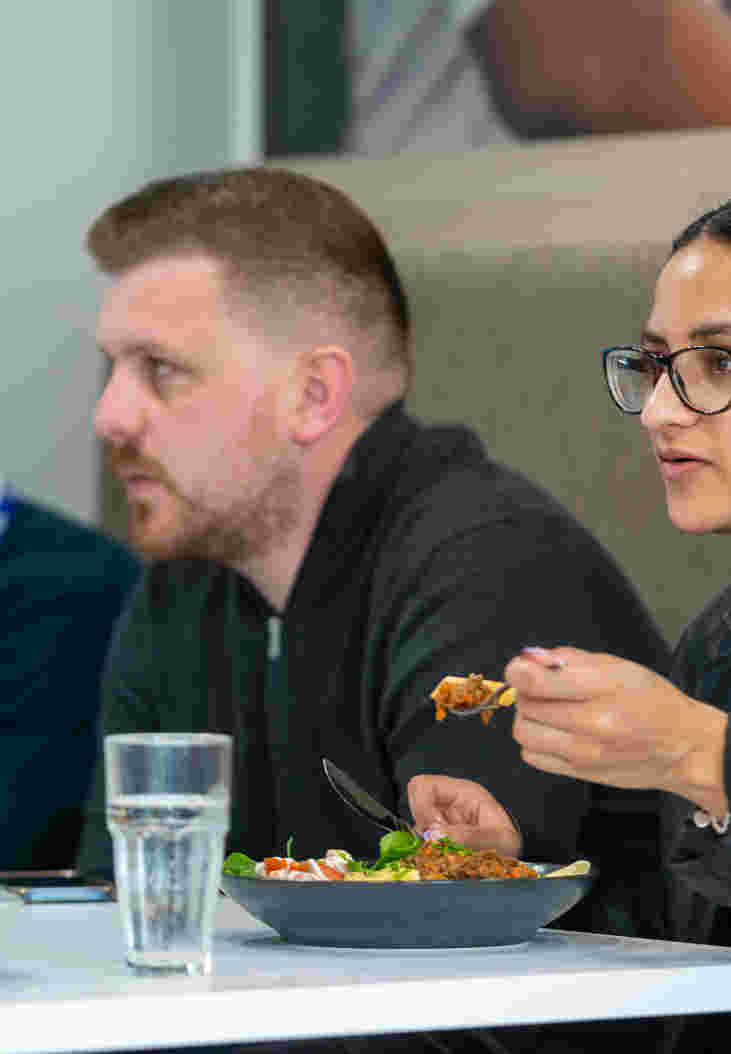The power of a nudge: tackling health and sustainability via the workplace
In a nation where obesity and climate change consistently appear on the list of our most pressing concerns, businesses are emerging as unexpected champions in the battle for a healthier, more sustainable future.
Nestled within the realm of workplace culture, the science of nudging has emerged as a game-changer - promising to inspire transformative choices that impact our wellbeing and our planet's welfare.
Change starts in the workplace
The issue of poor health and the ever-looming spectre of sustainability both equally demand our attention. Alarming statistics from the NHS and The Health Survey for England remind us that obesity has its grip on one in four UK adults, with 38% finding themselves grappling with being overweight. Simultaneously, as we strive to usher in a Net Zero era by 2050, the UK's staggering food waste of 9.5 million tonnes annually juxtaposes with 8.4 million people struggling with food poverty. These discrepancies are stark reminders that change is imperative and should ideally start where most people spend a significant chunk of their lives: the workplace.
Dishing out over 4.5 million meals annually in the UK’s leading workplaces, the team here at Eurest has boldly embraced the challenge. Drawing inspiration from behavioural science, we’ve embarked on a journey to influence decision-making processes related to health, wellbeing and sustainability through nudging. At its core, nudging seeks to guide our choices through subtle alterations to our surroundings, leveraging automatic cognitive processes that bypass our logical faculties.

Nudging: A science-based, systematic method for change
The roots of nudging stretch back to 2008 when the book ‘Nudge’ by Richard Thaler and Cass Sunstein hit the shelves, catalysing a shift in how we understand decision-making. Unlike traditional health campaigns, which primarily rely on education and logic, nudging taps into the emotional and situational drivers of our choices. This science distinguishes between two cognitive ‘systems’:
System One: This is our unconscious autopilot mode. It makes decisions based on emotions and situational factors. Nudging aims to take advantage of that process to drive positive choices in key moments.
System Two: This is a conscious, rational process where the brain weighs up information to make decisions. It’s often targeted by traditional health initiatives, with the idea that once we have all the information, we’ll make the right decision.
In a world flooded with information, our brain is often overwhelmed. To cope, it takes shortcuts, relying on quick, unconscious decisions (System One) rather than in-depth analysis (System Two). While this unconscious decision-making is more common than we realise, it can lead to choices that don't align with our values - like unhealthy eating when stressed. The silver lining is that System One is receptive to nudging. By simplifying decisions, we can gently ‘nudge’ people towards better choices without resorting to forceful directives. But how exactly do we ‘nudge’?

The four methods of nudging
There are four known techniques for nudging, which we already use in our workplace partnerships’ everyday operations. Why not download our whitepaper to find out more?
Further reading
-

Lunch break power
Most employers recognise the importance of an employee lunch break, but now there’s research to prove it
Find out more -

Gen Z says
Workplace food services are important for talent attraction
Find out more -

Our social values
How we’re delivering social value in the food service industry
Find out more



